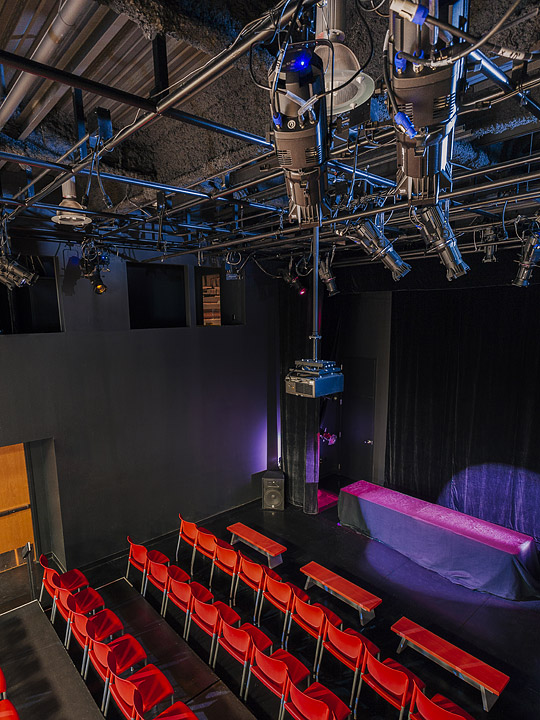

The building itself was almost totally destroyed by the 1755 earthquake, and its reconstruction started in 1758 under the supervision of the architect Giacomo Azzolini. King João IV founded Convento das Bernardas in 1653, and its cloister confinement was ready in 1655. The museum is situated in the Convento das Bernardas, listed as being of National Interest, under the designation of Public Interest. There is a willingness of the Collector to donate a part of this valuable and important collection to Museu da Marioneta. This enrichment was largely possible thanks to the involvement, since its reopening, of the collector Francisco Capelo, to whom bellongs an important part of the estate deposited in the Puppet Museum, namely asian, African and most recently Latin American masks and puppets. Since the reopening, the museum continuously reinforced and expanded it collection covering practices and countries that were previously not represented. Since 2001, Museu da Marioneta has been installed in the Convento das Bernardas, at Madragoa, in the center of Lisbon. Its outstanding collection and the fact that it was the only museum of its type in Portugal, led to an agreement signed between the owner of the original collection and the Câmara Municipal de Lisboa – represented by municipal company EGEAC – which enabled the preservation of the museum and its relocation to a venue that allows its public fruition within the noble conditions it deserves.

The building was highly degraded, and the Museum’s private management and lack of financial support and institutional sponsorship prevented its economic feasibility and the maintenance of a project that, throughout 13 years, represented Lisbon in the international puppet circuit. Thanks to its activity Companhia de São Lourenço, founded by José Alberto Gil, musician, and by Helena Vaz, puppet maker and artist, acquired different kinds of puppets that were the initial core of the Museum’s estate. The existence of a Portuguese puppet theatre and opera tradition – very significant within the history of European theatre – was represented by the historical repertoire of the puppet operas created by António José da Silva – o Judeu – and by the popular repertoire of several travelling puppet companies that appeared in the whole country throughout the centuries. It was, thus, the first Portuguese venue dedicated to puppets – since Teatro do Bairro Alto was extinguished in 1755 – and to preserving a theatre and opera Portuguese tradition. Lourenço, a travelling theatre company that performed both in Portugal and abroad. The Museum was founded in 1987 by Companhia de Marionetas de S.

Our goal is to spread its knowledge and learning, fostering activities in this specific field, conveying knowledge, education, and fun for all those who visit us. Our mission is to implement a whole range of activities related to the collection, maintenance, preservation, research, exhibition ad fruition of puppet theatres, puppets and its history. In the beginning our focus was put upon the national universe, and we are deeply proud to feature one of the most significant and complete collections of Portuguese traditional puppets. The Museum wishes to acknowledge their outstanding support. This development was possible due to the help and support of various people, authors, collectors and puppeteers who joined us in this project, giving their inestimable contribution and assets. The museum’s collection has evolved progressively, depicting the different theatrical forms that derive from ancient traditions or from modern artistic pursuits, exploring new forms, new materials, and new techniques. It is the first and only Portuguese museum solely dedicated to the interpretation and dissemination of the history of puppets and puppet theatres, featuring the history of this utmost fascinating art throughout the world, the different types of puppets and the various approaches they allow, focusing on the Portuguese puppets.

In November 2001 Museu da Marioneta relocated at the Convento das Bernardas.


 0 kommentar(er)
0 kommentar(er)
